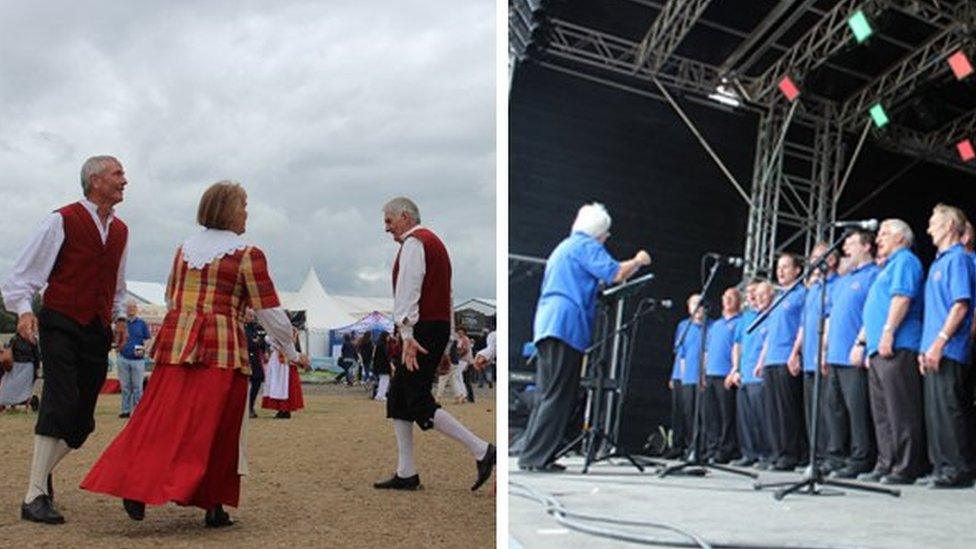Eisteddfod essentials
- Cyhoeddwyd

Check out our handy guide to find out more about the National Eisteddfod of Wales and what to expect when you get there.
What is the Eisteddfod?
The National Eisteddfod is a big Welsh language cultural festival that takes place annually, alternating between north and south Wales. It's the largest cultural festival of its kind in Europe, and a key event in the Welsh calendar.
It's a mixture of daily talent competitions and evening concerts, gigs, plays and exhibitions. Competitions in the main pavilion vary from dance to recitation, singing to brass bands.
When does it happen?
The National Eisteddfod takes place annually during the first week of August. This year, it takes place between 30 July - 6 August, with the opening concert held in the main pavilion on the Maes (festival field) on Friday evening, 29 July.
Where is it held?
Monmouthshire in south east Wales plays host to this year's National Eisteddfod for the first time since 1913. The Maes is in Abergavenny.
Who's it for?
Everyone's welcome! You'll receive a warm welcome at the Eisteddfod, regardless of whether or not you can speak Welsh. As a celebration of Welsh culture, Welsh is the official language of the Eisteddfod, but a translation service is available. If you require a translating kit you can just pick one up as you arrive at the Maes.
You can also check out our handy list of Eisteddfod words and phrases here. But remember you can still enjoy arts, crafts, music and dance and soak up the atmosphere, without an in-depth knowledge of the language.
What to expect
The Eisteddfod annually attracts on average more than 150,000 visitors a week. The main field is known as the Maes and the main pavilion is the hub of the festival where the music, dance, poetry and recitation competitions are held.
Competing in the pavilion draws to a close at around 4.30pm most afternoons for the main ceremonies to take place. These include: the Crowning (best work in free verse) on Monday, Daniel Owen memorial prize (best unpublished Welsh novel) on Tuesday, the prose medal on Wednesday, and Friday sees the chairing of the winning poet.
Around the Maes and beyond
There is also a theatre, and for the first time this year, a cinema on the Maes. Also arts and crafts exhibitions, a literature pavilion, an area for Welsh learners to hone their language skills (Maes D), live music stages dotted around, as well as trade stands and exhibitors. There are also plenty of food stalls on the Maes and also a bar.
There's evening entertainment at the Eisteddfod - both in the pavilion and in other local venues. These include plays, concerts and performances by local groups. If it's bands you're after, head to 'Maes B'.
Maes D - the 'd' stands for dysgwyr (learners) - is the Welsh learners' pavilion on the Maes. Get involved by competing on the Maes D stage, or sit back and listen to music while practicing your language skills with other Welsh speakers, learners and tutors.
More BBC news and stories from the National Eisteddfod 2016.